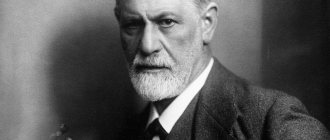What is public speaking
Public speaking is a public event during which the speaker (speaker) conveys certain information to the audience. Features of such representations:
- the presence of a group of listeners,
- predominant monologue speech,
- thoughtful structure of the statement,
- specific goal.
Depending on the purpose and audience, the style of presentation is chosen; for greater efficiency, various electronic tools are currently used (videos, presentations, audio recordings, and others).
A public speech can be considered any monologue speech aimed at several listeners (announcing a concert to the whole class, a student’s answer at the blackboard, speaking on stage, teaching a lesson, congratulating a friend at a holiday table, and so on).
Plan
The very act of being in front of a large number of people is stressful, especially for a new speaker. To reassure yourself and be on the safe side, it is better to sketch out a plan in advance on a piece of paper, which identifies the main points of the speech, tips and reminders. It is necessary that this note be in sight at all times before the performance. This way the speaker will be able to structure information in his head and speak successfully in front of the public. You can take the sheet with you when performing, but more for reassurance, and not as a cheat sheet.
Purpose of the speech
One of the important points of public speaking is the precise formulation of the purpose of the report and its full disclosure. If this is not done, the speaker risks facing condemnation from the audience. For a comprehensive consideration of the subject of the report, it is necessary:
- Convincingly argue your position, citing statistical data (preliminarily carefully checked for accuracy), graphic images, audio and video recordings.
- Present clearly and accessible.
- Adhere to specific vocabulary and style (depending on the type of audience).
- Structure the text.
It is important to understand that speaking has a purpose. In addition, you need to value other people’s time, trying to meet the audience’s expectations. The report should be concise, but complete with information.
Answers to possible questions
It is important to try to predict them and come up with the most appropriate responses for the audience. To do this, you need to put yourself in the place of the listener, assess his possible interest in certain aspects of the report.
There is no need to ignore questions - this is a disastrous strategy that can ruin the impression of even an impeccable performance. It is worth establishing rules for questions at the beginning. If the speech is short, the speaker may invite the audience to write down questions along the way and ask them at the end. For a long presentation, a suitable scheme is when questions are asked at the end of each information block of the report.
READ How to understand that a guy likes you: external signs and advice from psychologists
The question must be clear to the speaker. If the wording is vague, you can ask the viewer to clarify. The best answers are concise and understandable. It is worth thanking the listener for asking the question.
Conducting a dialogue
Professional-level reports are accompanied by dialogue with the public. A beginner will not immediately master this technique, but moving in this direction needs to start already at the start. Audience engagement will bring life to your presentation and create a positive overall impression.
The performance should provoke emotional reactions, so touching stories and anecdotes can be used in context. Even bewilderment will be a better reaction than complete indifference, so do not be afraid to ask rhetorical questions or share philosophical reflections. But it is important that this is not divorced from the content of the report.
Summarizing
Completing the report correctly is 70% of success. At this stage, the impression of the speaker and the content of the report is fixed in the minds of the listeners. A stronger emotional impact is possible, since everything said is summarized, the audience is called to action. All parts of the report logically follow from one another, and the ending is full of arguments.
We must remember to express gratitude to the listeners and end on a positive note. The speaker will also receive motivation and positive energy.
Types of public speaking
What is the friend zone in girls and men - the main signs
Public speaking is not the same; according to the target load, it is divided into:
- Informing (the main task is to convey information to listeners).
- Protocol (used at official events, anniversaries, rallies).
- Entertaining (humorous TV shows, concerts, stories from interlocutors).
- Persuasive or agitating (popular with politicians or advertisers who convince listeners that they are right).
Important! Typically, speakers use not one type of presentation, but several (for example, information and entertainment).
Public speaking varies not only in purpose, but also in the form of presentation of the material:
- A message is a public speech lasting up to 10 minutes, which briefly outlines the essence of the problem.
- A report is a clearly verified and pre-prepared story on a specific topic that can last from 10 minutes to 3 hours.
- Speech – short-term, no more than 5 minutes, presentation of information on the proposed issue. It can be improvised or prepared.
- A lecture is a monologue presentation before an audience of a specialist who is well versed in the topic. The optimal duration is 90 minutes.
- Conversation is a form of open speech in which the speaker’s monologue alternates with speeches from the audience.
Lecture
Presentation at the meeting
Situations . The 2 most common types of speeches at a meeting:
- Come up with a new idea
- Submit new information
Diagram 11. Presentation of the idea (option 1)
There are two universal schemes for presenting ideas. Moreover, they concern both simple working ideas and large strategic ones. From general to specific, when you start with the essence of an idea and then decipher it. And from the particular to the general, when you first describe the situation and gently lead to the idea itself.
Example 1:
The essence of the idea: I propose to move the warehouse to a new location.
Why I propose: The cost of renting the old place will double from the new year, renting a new place is cheaper than the current cost.
What benefits will we receive: We will be able to save on rent, and it will be more convenient for customers to pick up goods.
How much you need to spend: The total cost of moving will be X rubles. If we move before the fall, we will actually recoup the moving costs.
What needs to be done: List the actions...
Video example : Presentation of the idea of an escape capsule for aircraft. This is an example of a visual presentation. There is no voiceover, but the entire text is written or drawn according to our scheme: why we are offering it, the essence of the idea, what benefits we get in various situations, due to what technology (what exactly needs to be done). There is not only a block about costs, but this is already described additionally. For serious presentations to investors, they now draw similar visual videos of exactly 1-2 minutes to clearly present their idea.
Diagram 12. Presentation of an idea (option 2)
Example 2:
Current situation: We have an excellent warehouse and everything is fine at the moment. But there are emerging changes. If we don't take them into account, there will be trouble.
Future problems: The cost of renting the old place will double from the new year, renting a new place is cheaper than the current cost.
The essence of the idea: I propose to move the warehouse to a new location.
How much you need to spend: The total cost of moving will be X rubles. If we move before the fall, we will actually recoup the moving costs.
What needs to be done: List the actions...
Video example : The presentation is comic, but all elements of the scheme are followed exactly.
Figure 13. Presentation of new information
When preparing this presentation, consider how the new information came to light—whether it was an emergency or a planned innovation.
Example:
What has changed: Our company is introducing new rules for registering clients in the database.
Reason for innovation: This is a requirement of new legislation.
Details of the innovation: Now you will need to enter an additional information field.
How this affects us: Customer service managers will have a new rule to ask for this information.
What needs to be done: Department heads inform all managers.
Video example: Presentation explaining changes in documents on state registration of real estate.
Stages of public speaking
How to flirt with a man correctly - rules and examples of flirting
Almost all performances go through 3 stages:
- Pre-communicative (preparatory) stage.
- Communication stage:
- establishing a relationship with listeners;
- concentrating and keeping the audience's attention on the problem;
- arguing and proving your point of view;
- summing up and concluding the speech.
- Post-communicative (analysis of the positive and negative aspects of the event, personal conclusions of the speaker).
Important! Listeners remember best the ending of a speech, so speakers carefully think through the verbal design of this part in advance.
How to avoid mistakes
An important point is the preparation of the speech. Sometimes even the text should be written in full, or at least in the form of bullet points, without relying only on improvisation. Before a performance, many people begin to worry, and in this state it is difficult for them to come up with something witty.
It is worth following the example of famous speakers. Improv specialist Steve Allen first copied jokes from comedians' books. This method helped to learn the principle of constructing phrases. It is important to think about the beginning and ending of the report. Many speakers write the first phrases of their speech on small pieces of paper.
Public speaking requirements
What is charisma in a man - the definition of the word, how to become like that
The main task of the speaker is to convey information to the audience. To do this, its verbal representation must comply with the following standards:
- A clear start. The first phrase should attract attention and interest the listeners, so it is prepared in advance and memorized accurately.
- Create and maintain light tension throughout the performance. To do this, they deliberately confront two opposing opinions or argue with an imaginary opponent.
- Dosed emotionality. Monotonous speech is not understood by the audience, but excessive temperament does not inspire confidence in the speaker. To hold attention, they do not amaze with their dramatic talent, but select facts that affect the feelings of listeners.
- Conciseness. Short speeches are better perceived and remembered.
- Dialogue with listeners. The speech must include questions for the audience (rhetorical and real); the speaker can demand answers to them.
- Ease and closeness to a conversational style of speech. Talking about important things in simple, understandable language without difficult to pronounce terms is the highest aerobatics in oratory.
- Establishing and maintaining a relationship with listeners. The speaker must monitor the reaction of the audience and, as necessary, adjust the methods of presenting information.
- Clarity of the idea of the speech. The main idea is clearly formulated and repeated several times for better perception.
- Clear ending of speech. Both the initial and final phrases are formulated in advance, pronounced emotionally, clearly and meaningfully, so that the listeners understand that this is the end of the speech.
Important! Depending on the purpose and genre of the speech, some points are manifested to varying degrees: more emotionality may be allowed in entertaining speeches than in informational ones.
Speaker's emotions
Add visibility
To do this, use some thematic props. It grabs the audience's attention and helps emphasize your points.
For example, the head of a large insurance company, an avid tennis fan, wanted to start the annual meeting with a bang and did it with a spectacular racket swing. In this way, he expressed his determination, “won a point against his competitors,” rallied the team and ultimately “won the Grand Slam.” Over the following years, all speakers were compared to him and his ability to deliver a motivational speech.
Think about how you could use a wall clock, a colorful bag, a bunch of carrots, ball juggling, or card manipulation to engage your audience, add humor, and get your point across.
Preparation rules and basic techniques
Experienced speakers follow certain rules when preparing their speech:
- They are responsible for defining the topic: it must be specific, not imply a large amount of information, be based on experience from the storyteller’s life or on the requirements of the customer, or correspond to the thematic plan and curriculum (for teachers and professors).
- They think over and formulate a title that accurately expresses the essence of the speech. The title uses clear words and avoids complex terms and long sentences.
- Determine the goals of the speech for the speaker and for the listeners, which are directly or indirectly communicated to the audience. Most often, speeches are made for the purpose of:
- inform;
- form an opinion;
- change point of view;
- influence people's consciousness and motivate them to action.
- Selects, studies and analyzes information from:
- official sources,
- scientific and popular science literature,
- reference literature,
- statistical data,
- journalism,
- Internet resources.
Important! Information is taken from several sources and carefully processed.
- Analyze the composition of the intended audience and the general situation in the room. The text of the speech is compiled taking into account the age, social status and interests of the audience (children perceive information differently than adults).
- Working on the content of the speech:
- make a plan
- select material
- choose a speaking style,
- arrange parts of the speech compositionally and logically,
- are working on writing the full text,
- write down the abstracts and summary of the message (some speakers use loose or card notes).
Preparing for the performance
Introducing yourself and your company
Situations . Any situations where you need to explain to people who you are and what you do:
- Introduce yourself and your company before starting the presentation
- Present your company at a round table at a business event
- In an informal setting, quickly answer the question “what do you do?”
- Introduce the company to a specific client at a meeting
Diagram 9. Introducing yourself before the presentation
This may not even be a full-fledged presentation, but literally 3-4 sentences about yourself. Or a 1-2 minute story about your business.
Example:
Who are you: I am an English teacher.
What I do: I teach courses for employees of organizations.
Why it’s useful: I help you learn how to speak with foreign partners using professional terminology.
Unique feature: Compiled dictionaries of professional terminology for 15 areas of activity.
Video example : Presentation by Pavel Durov about his. Presentation from 2012, but suitable for example. Watch the first 2.5 minutes, where you introduce yourself and the company. Notice how, on the one hand, business graphs and figures are used, and at the same time, the features of the company are emphasized very clearly and with humor.
Diagram 10. Presenting your company to the client
The diagram shows a version of the company’s presentation during mutual acquaintance with the client at an individual meeting. The same scheme can be used for other cases, just changing the last block (not a transition to the client’s task, but a conclusion or a call to action, or a transition to the next part of the presentation).
Example:
Name: ABC Company.
What we do: We help Russian companies start business in China. Our specialty is finding partners for unpopular types of business in the country.
In what situations do people turn to us: People turn to us when they want to find partners, analyze the market, and correctly draw up legal documents.
Example of work: For example, our latest project is... We took on the task of finding partners to sell a product that had never been offered in China.
Moving on to the client's problem: What problem do you want to solve?
Video example: The video example shows a company presentation for a website. In a meeting with a real client, you will speak a little differently, but the principle is the same. Please note: the story is not told in cliche phrases that the company has a high-quality product and reliable service, but rather shows what the client is worried about and how it can be solved.
General recommendations for introducing yourself and the company
- Strangers don't want to hear a story about you or your company. They only care about 2 things: to figure out what you do and how you can be useful.
- If your profession is simple and clear, and the company is well-known, it is easier. For example, I am an airline marketing director. If your job title and company don't tell the listener anything, you'll have to spell it out. For example, I am an observer technologist. In this case, it’s easier to say in ordinary words what you do. My company builds houses, I monitor compliance with construction technologies.
- Avoid creative formulations: provider of happiness, text tamer, we give a holiday, I inspire people, etc. They don't make it clear what you do.
- Do not get carried away by listing regalia and titles. If they are presented at the wrong moment, they may be perceived by the audience as narcissism.
- Avoid slogans and general phrases, such as: we have extensive databases of partners, we have very high-quality products, we have the best terms of cooperation. What is all this based on? If so, please provide specifics.
- If your presentation can leave out the company name and the rest of the story will suit any competitor, then you have not shown the character of your company. The presentation needs to be redone.
Drawing up and using a plan
People who speak often understand the importance of a well-written plan, which usually includes:
- a thoughtful way to hook the audience;
- an introductory part outlining a certain problem that is understandable and close to the listeners;
- a short list of the main ideas of the speech;
- the main part, containing no more than 3-4 key points, so as not to overload the audience with information;
- a final part that draws clear and meaningful conclusions from the entire speech.
A plan is necessary at the stage of preparing a speech so that the materials are arranged in the correct logical chain. During a speech, it is also needed so that the speaker can convey everything planned to the audience.
Successful speakers understand the nature of eye contact with the audience and do not allow themselves to sight-read the entire speech. It is at this moment that a plan (preferably a thesis) comes in handy, which will not allow the speaker to wander away from the intended topic.
Exercise "Rehearsal"
Even famous speakers practice before giving a presentation. Some more than once.
The rehearsal should consist of the following steps:
- Memorizing text. To do this, the speech must be read aloud and memorized. You may not remember everything verbatim. It is necessary to remember the sequence of main thoughts.
- Then you should rehearse your speech. It is important to pay attention to intonation and pauses. The audience pays attention to how the text is spoken.
- After this, you can start practicing gestures and facial expressions. It is worth thinking about what emotions need to be conveyed to the public, and what emotions will help with this.
Finally, a dress rehearsal is required. At the same time, it should be held in front of a small number of familiar people. These could be relatives, neighbors or close people.
The beginning and end of a speech in front of an audience
The beginning and ending are the most powerful parts of a speech. It has been proven that the initial opinion about the speaker is formed during the first 5-30 seconds of communication. Therefore, the speaker tries from the very beginning to create an appropriate psychological mood with a greeting, demonstration of a video or photo, communication of an interesting fact, description of the problem or possible prospects after solving it.
After the connection with the listeners is established, the rhetorician moves on to the main part, not forgetting that people's attention span weakens after 10-20 minutes.
It is important to end the speech correctly. This part of the message consolidates the initial impression of the speaker and the topic of the story, enhances the emotional impact on the audience, sums up everything that has been said, once again emphasizes the idea of the text, and calls for specific actions. Competent speakers compose a speech in such a way that all parts flow logically from one another, are sufficiently saturated with emotions and arguments, and include practical recommendations and compliments to listeners.
Thinking through the beginning and end of the speech
How to start a speech: 10 ideas. What do listeners like?
How to come up with a powerful, bright beginning for a speech in front of an audience? Here are some ways to give your speech an effective start. If you can figure out how to show your audience how warm and friendly you are while impressing them, within 30 seconds of starting your speech they will be ready to follow you to the ends of the earth.
Start with a positive statement. You can let your audience know that they will enjoy your talk. For example, you might say, “You're really going to enjoy our time together today. I'm going to share with you some of the most interesting ideas and important discoveries in this field."
Mention a current event. Use a recent newspaper editorial as a bridge to get to the topic of your conversation or to prove or illustrate your point. You can bring a copy of the newspaper with you and unfold it in front of everyone when you refer to what is written in it during your opening statements. Such a picture - you standing on stage with a newspaper in your hands and reading or reciting important thoughts by heart - will attract the audience's attention to you and make people lean forward so as not to miss a single word of yours.
Retell a recent conversation. Start by recounting a recent conversation you had with someone present. For example, say this: “I was talking to Tom Robinson in the lobby a few minutes ago. He told me that now is one of the best times to do business in this industry. And I agree with him."
Make a shocking statement. You can start your speech with a statement that will cause some shock. For example, you might say something like, “The latest indications are that next year, competition in this industry will not only increase, but will lead to changes and new opportunities that were unimaginable in the past. As a result of all the upheavals, 72 percent of the people sitting in the hall now will be working in another field in two years if they cannot adapt quickly enough to the changed environment.”
Start with an anecdote—if appropriate. You can start a speech with a joke, but only if it is actually funny. You must be 100 percent sure that the audience will perceive your statement or story as comical. Therefore, you should first test your joke several times on other people to ensure its effect. Use humor only if you yourself think the story or joke is funny, and also if you are convinced that you can tell it well and it will actually be adequately perceived by the audience.
Entertain your audience. One of the best American speakers, Bill Gove, after he was formally introduced to the audience, usually took the stage as if he had just interrupted one conversation backstage to now move on to another - with a group of people sitting in the audience. The listeners got the feeling that he was not going to give a speech, but just wanted to talk to them.
Beal often walked to the very edge of the stage, gave himself a conspiratorial look, used his hands to encourage the audience to move closer to him and said in a half-whisper: “Come closer, I need to tell you something.” One got the impression that he was going to reveal some great secret - at the same time to everyone present.
The most amazing thing is that people in the audience actually leaned forward to hear the “secret.” And then suddenly they realized what they were doing and burst out laughing. After this “trick,” Gove could already, as they say, twist ropes out of them.
Ask a question, conduct a survey. You can also start by making a positive statement and then ask a question that requires a show of hands. Try this option: “Today is a great time for us to live and do business. By the way, how many of you have your own business?”
I often start a conversation this way and, after a certain number of people in the audience have raised their hands, I ask one of them sitting closer to the stage: “How many people are really doing their job?”
Invariably someone answers: “We all do!” After that, I give confirmation to this answer: “You are right! We all do our own thing, from the moment we get our first job until we retire. We all work for ourselves, regardless of who pays us."
Make a statement and ask a question. You can start with an impressive statement and follow it up with a question. Then give an answer and ask the next question. This technique instantly draws people into the topic, and they will eagerly hang on your every word. Here's an example:
“Twenty percent of the people in our society make 80 percent of the money. Are you in that top 20 percent? So, over the next few minutes, I'm going to introduce you to some ideas that will help you become one of the highest paid members of our society. Do you think it was worth coming to the seminar today for this?”
There is one interesting psychological phenomenon that manifests itself in people from childhood: they are determined to answer questions posed. Every time you ask a question and then pause to give people time to process it, you gain complete control over the audience. Even if people don't answer out loud, they can't bring themselves not to answer at all.
Start with history. You can start your speech with history. It’s hard to come up with more powerful words that instantly capture the audience’s attention than the words “Once upon a time, once upon a time...”.
Ever since infancy and early childhood, people love all kinds of stories and fairy tales. The listeners instantly calm down, fall silent and lean forward, like children sitting around a fire. When I conduct all-day seminars and want the participants to quickly sit down after a coffee break, I say loudly: “Once upon a time, there lived in a city, right in this very city, a man...” Upon hearing these words , the seminar participants quickly take their seats and fall silent, waiting for the story to continue.
Build a bridge between yourself and the audience. One of the most important tasks of the introductory part of a speech is to establish contact with the audience, to build a bridge between you. Start with something that connects you with your audience. For example, from the fact that today - or some time in the past - you worked in the same industry. Maybe you have children just like them. Maybe you're familiar with their city, or maybe you're a fan of the local football or basketball team. Or you have some kind of problem or concern that is in many ways similar to the problems and concerns that listeners face in their work or life.
If you spend a few minutes building this bridge between you and your listeners, they will immediately come over to your side. They will see that you are one of them and will be more receptive to your words and ideas, and will also become more generous and forgiving of your possible mistakes. They will feel that you are knowledgeable and approachable because you have a lot in common with them.
Tell the audience about yourself. Very often I begin my speeches to businessmen, entrepreneurs and sales representatives with the words: “I went into business without graduating from high school. My family had no money. Everything I have achieved in life, I had to achieve on my own. If anyone helped me, it was only a little.”
It's amazing how many people come up to me after talks like this to confirm that they've been through the same journey. And, according to them, they immediately began to identify with me, because they themselves, like most people, started with bad grades at school and little financial opportunity. Therefore, they listened to my speech with great interest and felt: everything I say describes their current situation much more accurately and is much more useful for their future than what a person with a “high start” in life could say in my place. It is very useful to build such bridges between yourself and your listeners: they will definitely come over to your side.
And 6 more ideas:
- Thank the organizers
- Praise your listeners
- Remember a historical event
- Quote the words of a famous person
- Provide the latest research data
- Start with the problem
Possible mistakes
Oratory skills do not come immediately; many novice speakers make typical mistakes:
- They demonstrate a lack of confidence (the speaker has little knowledge of the issue being covered or is afraid of people).
- They begin to make excuses and lose the trust of the listener.
- Do not illustrate the speech with examples from experience or literature.
- They use excessive gestures and chaotic facial expressions (to control body language, they analyze the video recording of the performance and get rid of unnecessary movements).
- They do not select words and compose sentences accurately (for example, frequent use of negative particles will lead to misunderstanding of the text).
- They pay little attention to preparation.
- They read the message monotonously without humorous asides and do not maintain eye contact.
- Do not use pauses to maintain attention - stopping for 10 seconds will awaken the curiosity of all distracted people.
- They show excessive seriousness, self-confidence and over-erudition.
- They use a large number of filler words.
- They fuss or, on the contrary, become tight.
Important! High-quality preparation and repeated rehearsals allow you to avoid many mistakes.
Speaker mistakes
How to prepare
It is necessary to realize that public speaking is not a talent that one is born with, but an acquired skill. Moreover, the ability to speak in public is constantly improved with enough practice. Anyone who has the ability to speak can advance to a higher level of proficiency than they currently have.
You should start preparing after getting rid of the fear of the public. Typically, uncertainty increases if a person has already had a bad experience. For a successful presentation, you need to become familiar with the key aspects and work through them with due diligence.
READ If a man truly loves, how does he behave: psychology of the stronger sex
Speech production
It is necessary to assess the psychology of the target audience, that is, those for whom the report is intended. The voice is the main instrument of the speaker, so success directly depends on the degree of mastery of speech technique.
In some trainings, seminars and lectures, students quickly lose interest in the material. This is due to the monotonous voice of the speaker, sounding like a lullaby. But other events are lively, the public is active and interested. In this case, the audience is “revived” by the way the material is presented, and not by its content.
There is no need to speak too loudly if your voice is not naturally strong. It’s worth mastering a special technique to speak in a way that can be heard everywhere. Not only volume is important, but also voice clarity and proper breathing. Professionals build unique nonverbal formulas consisting of a sequence of intonations. This allows you to have a stronger impact on the listener than through the content aspect of the speech.
Rehearsal in front of the mirror
Even if you don’t have any fear of speaking, it’s worth rehearsing your speech. This is an important step that is often missed due to lack of time. But it’s better not to neglect the opportunity to practice.
The “simulator” for such training is an ordinary mirror. Rehearsing before reflection allows you not only to become better acquainted with the presentation material, but also to analyze your own facial expressions while delivering a speech, which increases the chances of success.
You should not put your hands in your pockets, hide them behind your back, or occupy them with a fountain pen or other foreign objects, as this betrays fear and uncertainty. Hands are another oratorical tool in conveying information to the viewer.
A natural smile is the best facial expression for a speaker. Don't stare at one point or try to look indifferent. In addition, gestures, posture and posture are important. All this during a speech should be one with the thoughts that the speaker is trying to convey to the audience.
Appearance
A public report is partly a theatrical performance. It is important that the appearance of the speaker is impeccable and meets the established requirements of etiquette (if necessary in a particular situation).
Clothing should under no circumstances cause physical or psychological discomfort. You should not choose an image so that the content of the report is discordant with how the speaker looks. If the situation is official, it is better to follow business etiquette and choose a neutral set. Overly expressive details, such as a bright tie, shoes, socks or pocket square, can distract from the content of the report. For this reason, it is better to avoid using them, as well as glasses (unless there are medical indications), jewelry and conspicuous jewelry. Don’t forget that people are greeted by their clothes, so clothes for a performance should look beautiful and be of high quality.
READ Interesting questions to help spark conversation
The image and all its details must be thought out in advance. It is necessary to make an appointment on time for a manicure, get your hair done, pick up shoes and elements of the set, and try them on. If necessary, you should visit a dentist and cosmetologist. If you leave all this until the last minute, there is a risk of a lot of problems arising on the eve of the performance.
The psychology of speaking in front of people
In order to attract people's attention, psychologists advise:
- Pay enough attention to your appearance (dress comfortably and respectably).
- Take a short pause before starting and look around the audience, making eye contact.
- Start your performance at a slow pace.
- For public speaking, it is recommended to lower the timbre of your voice by 2 tones (this will help protect your vocal cords; a low voice is perceived by people better than a high one) and develop the skill of using various voice techniques.
- Repeat the most important thoughts 3 times.
- Do not exceed the speaking limits, even if the audience’s attention has not weakened.
Successful performance
Thus, if you prepare diligently, then everyone will be able to perform well in front of the public.
Play a short video
Imagine: you start your presentation to the production department with a video in which satisfied customers give a positive review of your product. Or you open a fundraising event for endangered species with a mini-film about the Amur leopard and its offspring.
The video evokes an emotional response. Unlike words and slides, a short film engages the audience more easily, adds drama and quickly conveys the essence of what is happening.
What techniques do you use? Share in the comments.








